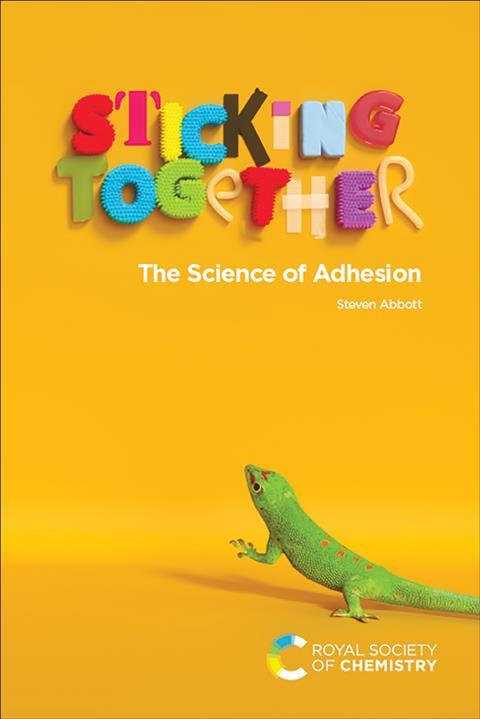Steven Abbott
Royal Society of Chemistry
2020 | 278pp | £19.99
ISBN 9781788018043
Buy this book in the RSC book shop

When I saw the subtitle of this book The Science of Adhesion, and the fact that it was published by the Royal Society of Chemistry, I imagined turf wars breaking out with the Institute of Physics – as surely the science of adhesion is pure physics. However, it would be fair to say that in practice the majority of the book covers the science of adhesives, where chemistry can certainly lay a firm claim.
There is no doubt that this book will answer everything you ever wanted to know about how things stick to other things – from geckos to PVA adhesive. It is both comprehensive and often fascinating. Author Steven Abbott has a friendly style and supports the material in the book with regular links to YouTube videos where you can see various experiments and tests being undertaken for real, which is really helpful. We also get an insight into some of the more contentious aspects of the science of stickiness, where Abbott is entirely prepared to declare that some of his colleagues in the field are simply wrong.
The reason this book is excellent is that we totally underappreciate how important adhesives are in our everyday lives. The natural tendency is just to think of the glues we use for a spot of DIY – but it’s so much more. Those glues are all there, from epoxy to superglue, but that’s just the start. Not just the sticky tapes we use every day but all the packaging, for instance, relies on adhesives – something we don’t even notice. Think, for example, of what keeps the top on a yoghurt pot. This isn’t just a matter of convenience, but of keeping our food safe. And, of course, adhesives also play a big role in the construction of cars, trains and aircraft.
Unfortunately, there is a downside to the book too. Abbott has huge enthusiasm for his topic, but that passion for a pet topic is hard to pass on beyond the initial ‘wow’. All the applications of adhesives are really important, and the different types of adhesive are interesting. But Abbott takes us into more detail than we really want, meaning there were pages at a time I had to force myself not to skip to get to the next interesting bit. The book would have benefitted from having a much sterner editor if it was intended to appeal more to a general audience.
Don’t get me wrong. It’s by far the best book about adhesives and adhesion I’ve ever read. (Actually, it’s the only book about adhesives and adhesion I’ve ever read.) And if you want to know more – and you really should, because they are both important and interesting – it gives you everything you’ll want to know and much more. I just wish there was a bit less of the much more.
A version of this review was first published on Popular Science.
No comments yet